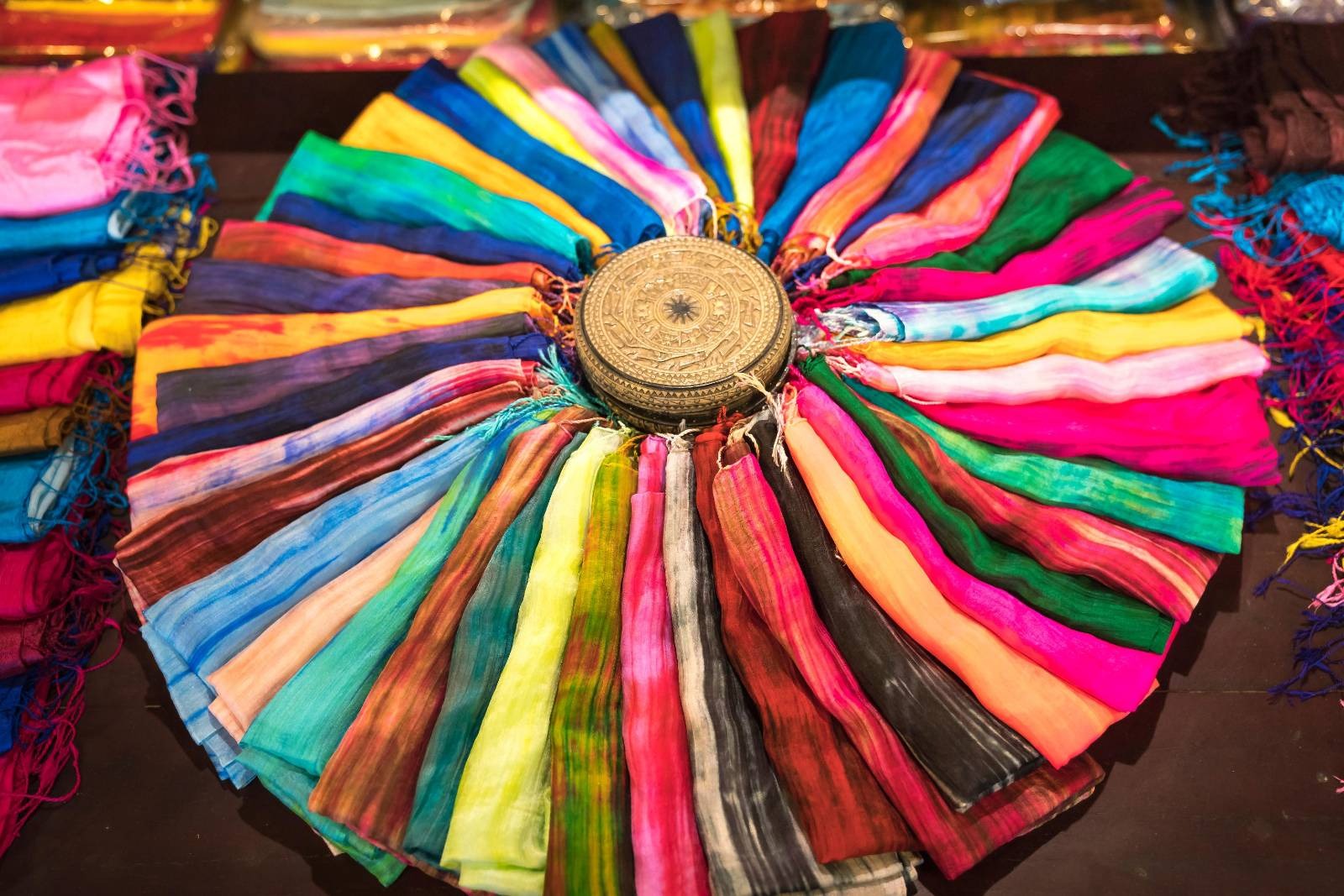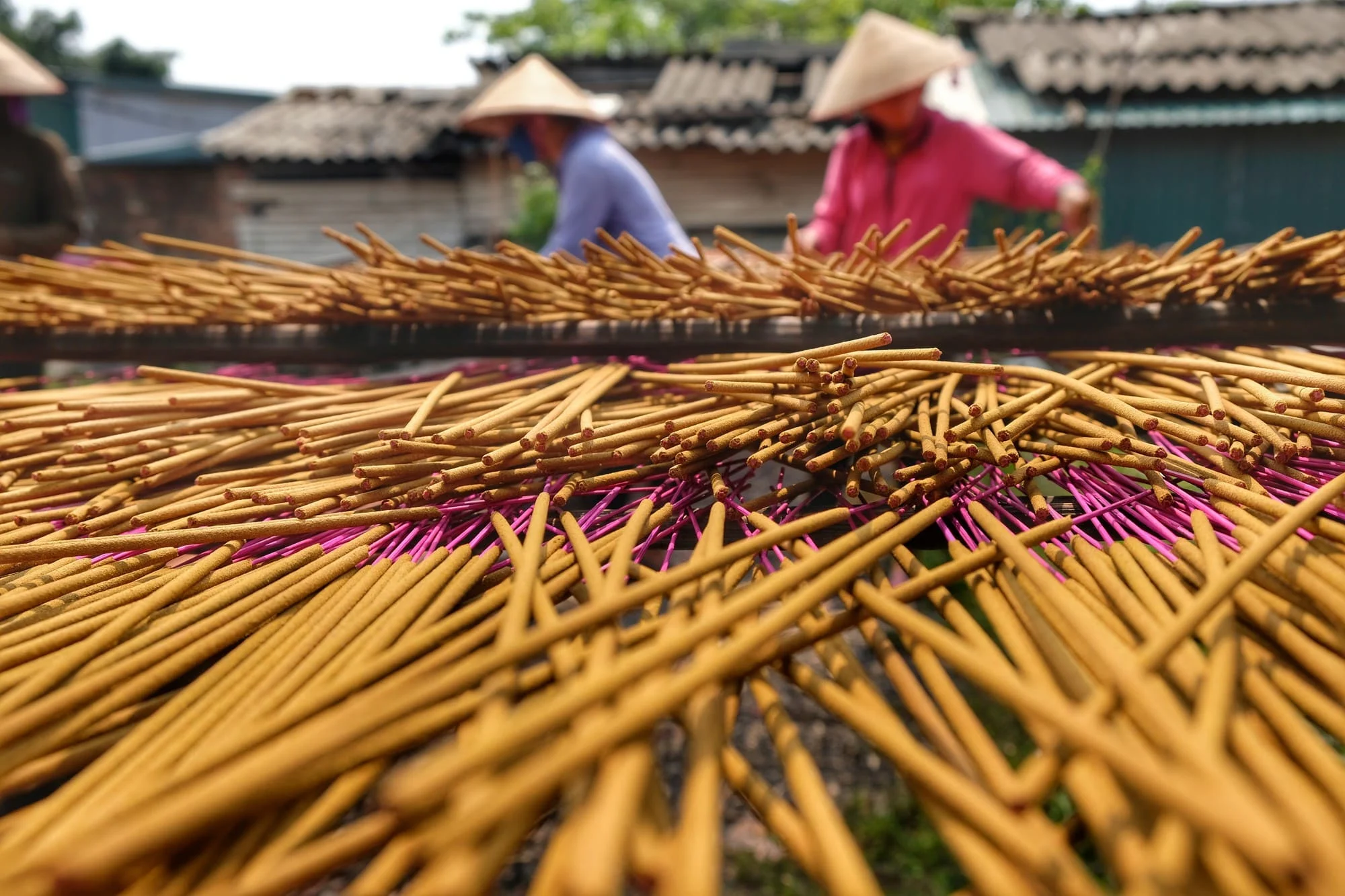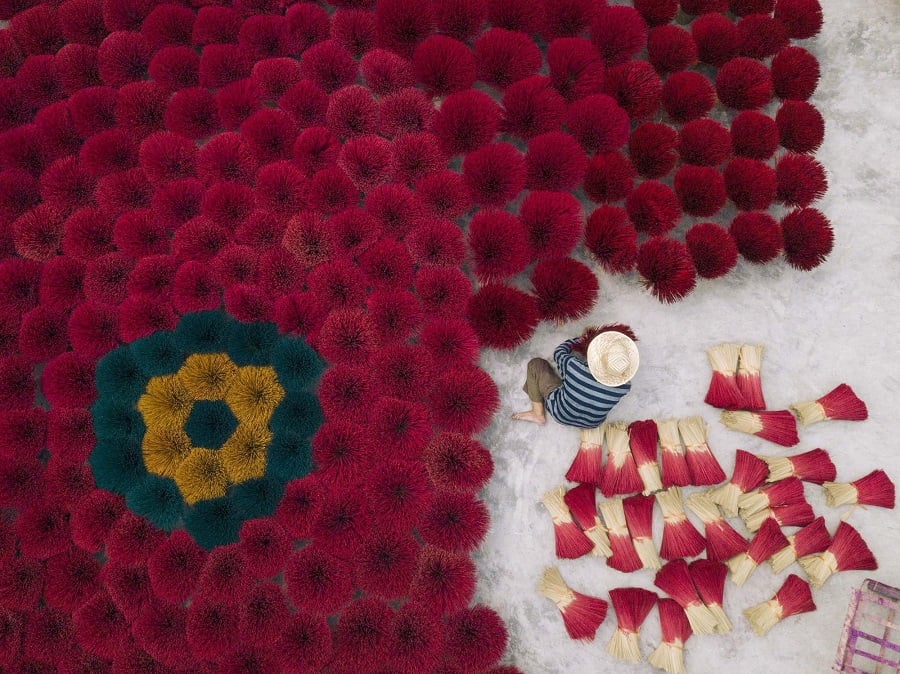Hanoi’s traditional craft villages offer a rich cultural heritage, where ancient techniques and artistry continue to thrive. From the intricate ceramics of Bat Trang Pottery Village to the delicate silk weaving in Ha Dong, each village tells a unique story of craftsmanship passed down through generations. These villages not only preserve Vietnam’s traditional art forms but also invite visitors to experience the timeless beauty and skill of local artisans firsthand.
Contents
1. Bat Trang Pottery Village

Bat Trang Pottery Village is located in Bat Trang Commune, Gia Lam District, Hanoi, with a history of over 500 years. This place has preserved its traditional craft through generations, producing unique ceramic products known both domestically and internationally. The diversity and refinement in each product have made Bat Trang pottery renowned, with exports all over the world.

With its rich history and unique ceramic products, Bat Trang Pottery Village not only attracts visitors with its traditional beauty but also offers a fascinating experience of visiting the village and participating in traditional pottery-making with artisans. It is an ideal destination for those who love culture and folk art.
2. Ha Dong Silk Village

Ha Dong Silk, also known as Van Phuc Silk, is an ancient silk-weaving village with a history of a thousand years. Van Phuc silk has some of the oldest patterns in Vietnam.

In the past, Van Phuc silk was widely used in the royal court due to its high quality and beautiful patterns. Today, there are about 800 households engaged in this craft, many of which still maintain traditional weaving looms along with modern mechanical ones. This shows that the villagers continue to preserve traditional practices while investing in the development of the village in the context of integration.
Van Phuc silk products come in many varieties: silk, satin, brocade, velvet, chiffon, linen, and more. With its famous brand and long-standing tradition, a trip to Van Phuc Silk Village promises to offer many interesting experiences. Here, visitors can shop for authentic silk products and observe the process of creating silk by talented artisans.
3. Quang Phu Cau Incense Village
Quang Phu Cau Incense Village is one of Hanoi’s oldest craft villages, with a history of over 100 years. Despite the passage of time, the village has preserved the distinctive ancient beauty of the Northern countryside. Quang Phu Cau is the primary supplier of incense sticks for the spiritual needs of Hanoi’s people.
Upon arriving at this place, many visitors are captivated by the image of bright red incense sticks covering the large streets and small alleys. The incense sticks are carefully bundled and arranged, fanning out like blooming flowers, adding brightness to the peaceful and contemplative village landscape.
4. Rice Flake Village

The rice flake-making craft in Me Tri has a history of over a century. In Me Tri, there are two hamlets (Thuong and Ha hamlets) where many households are involved in this craft. The rice flake craft in Me Tri has been recognized as one of 17 national intangible cultural heritage items.
The process of making rice flakes here is quite meticulous, using ingredients from various types of glutinous rice such as fragrant sticky rice, tan sticky rice, orange sticky rice, and Hoa Vang sticky rice, creating a delicious and aromatic product famous throughout the region.

5. Water Puppetry

Water puppetry is a traditional folk art form that has existed in Vietnam for about 300 years. If you want to enjoy fascinating water puppet performances that are deeply rooted in the history and culture of the country, visit the Dao Thuc water puppetry village. The soft, melodious folk tunes performed by the artisans promise to leave you with unforgettable impressions.

These villages not only preserve Vietnam’s traditional art forms but also invite visitors to experience the timeless beauty and skill of local artisans firsthand. Peony hopes you can have the best experience on the journey in Ha Noi.



